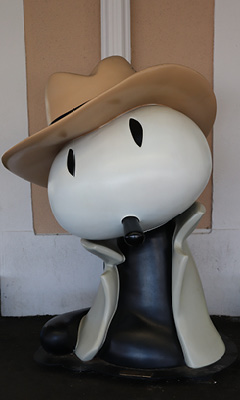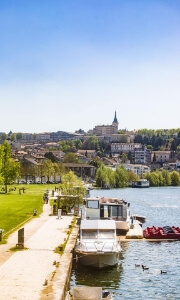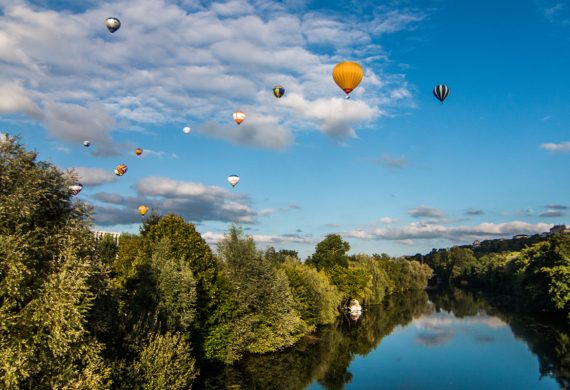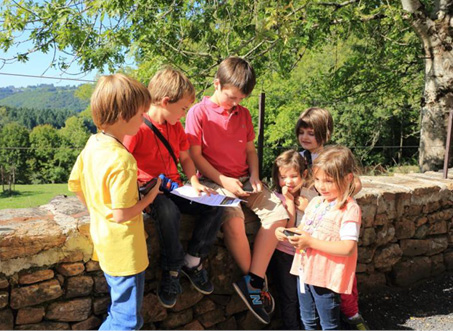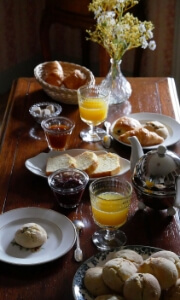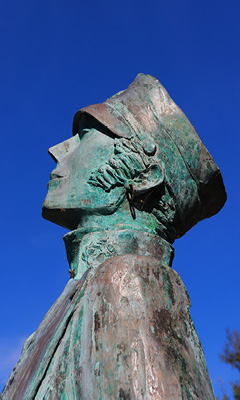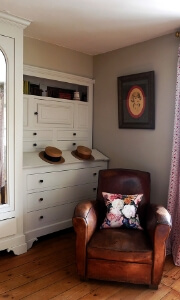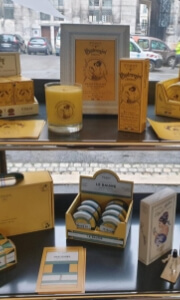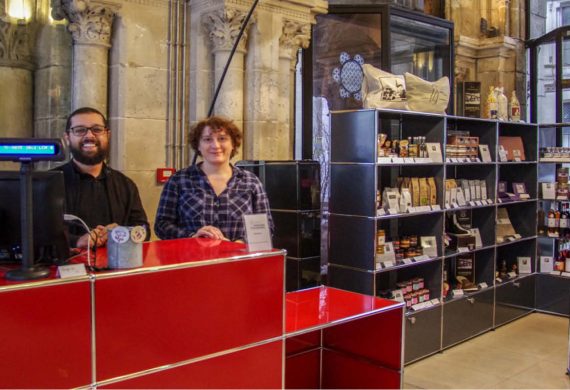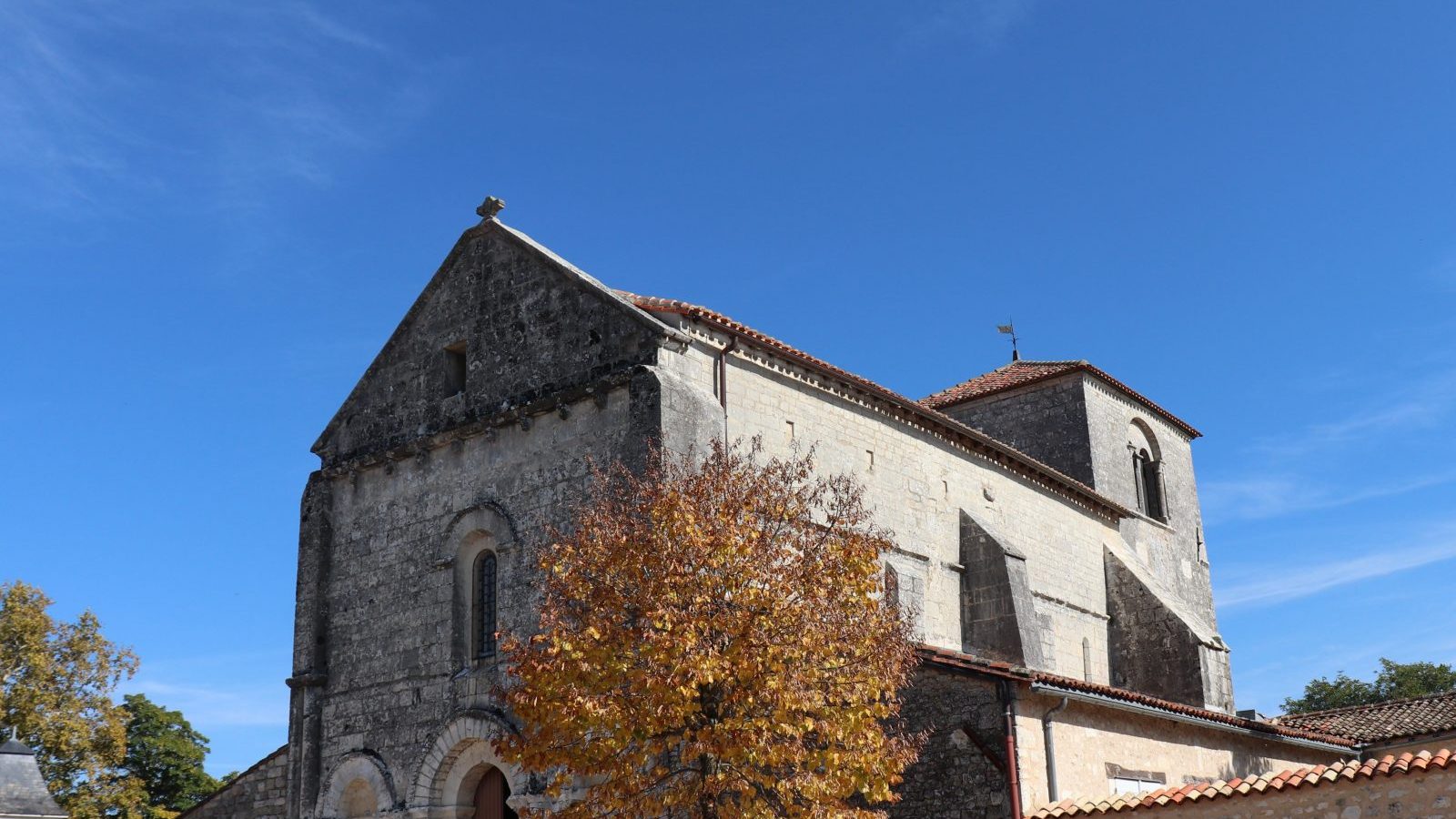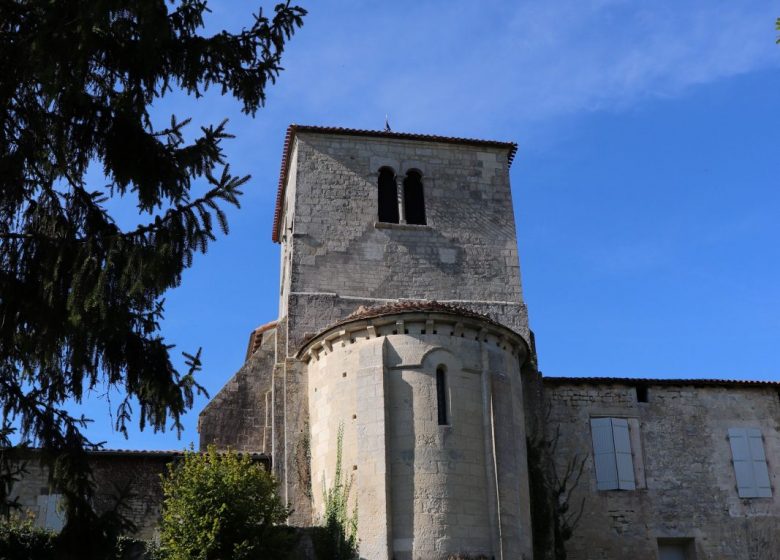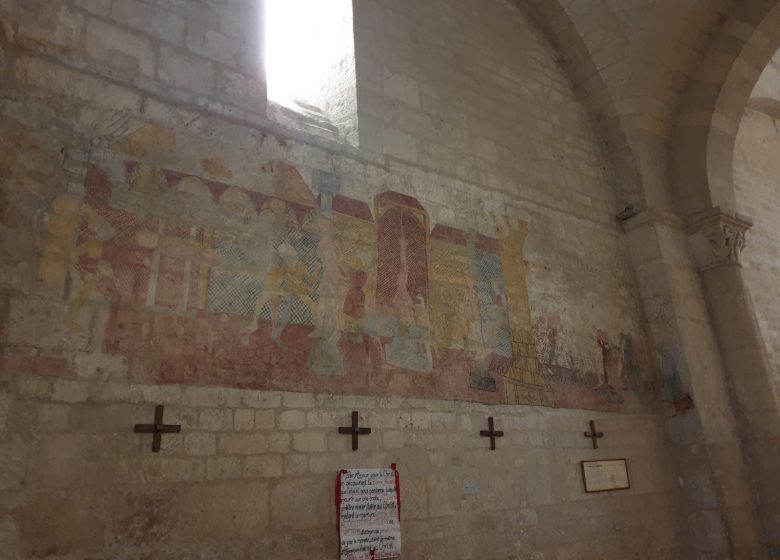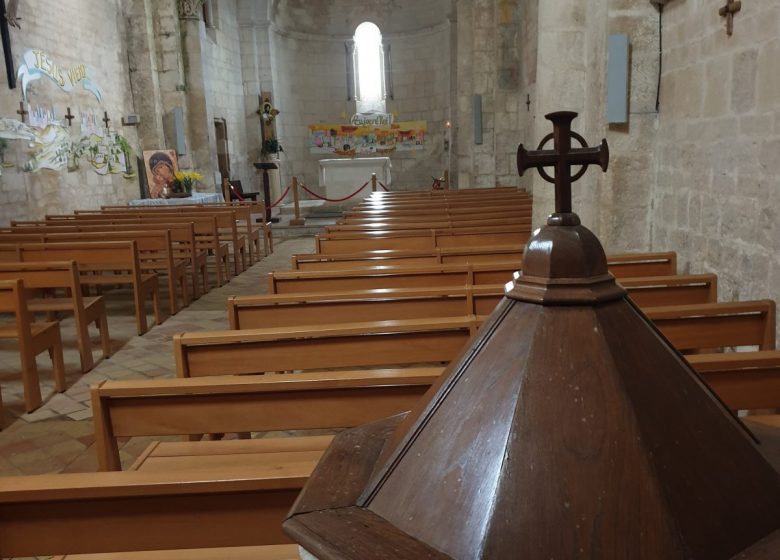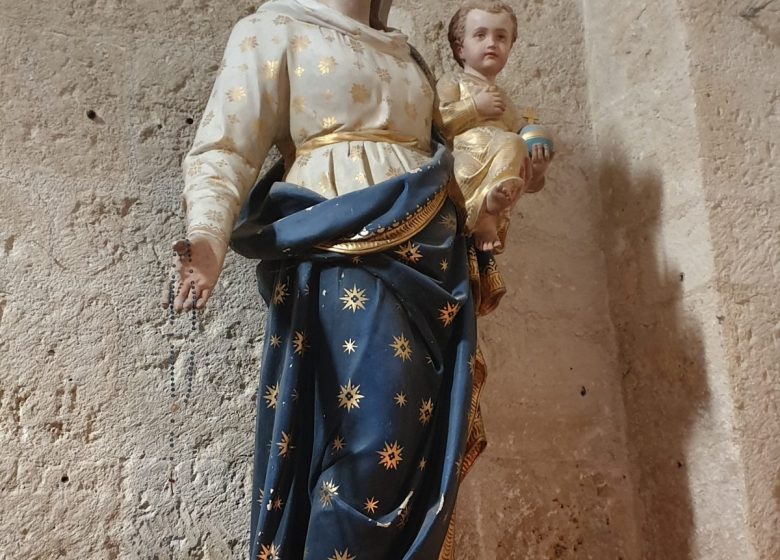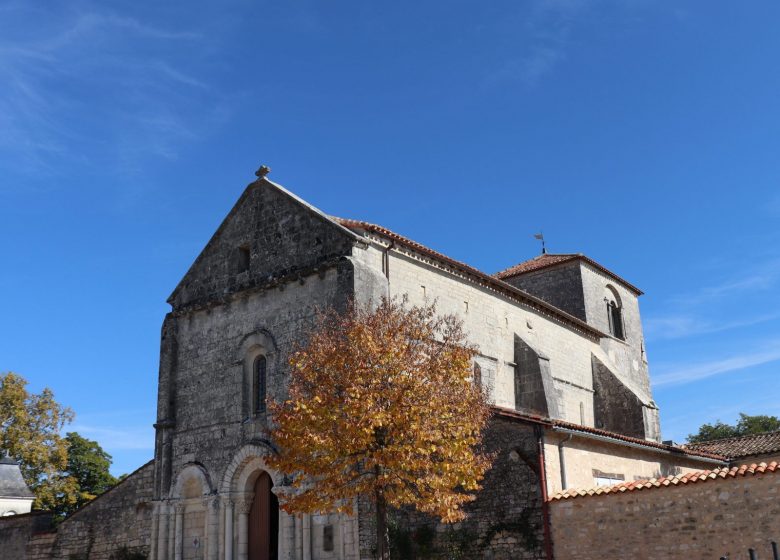
Located on a promontory facing the Angoulême plateau, and overlooking the river, the town of Fléac hosts a small church attached to the deanery.
First placed under the authority of the Benedictine abbey of Saint-Cybard d'Angoulême, then that of the cathedral chapter from 1110, this Romanesque church adopted the vaulting in a row of cupolas on pendentives for the nave and the false square placed under the steeple.
The surprise is revealed inside with splendid mural paintings dating from the XNUMXth century.
They develop in a frieze along the entire length of the south wall of the nave of the second bay as far as the backsplashes, while a piece is preserved on the western part of the south backsplash, 1,50m from the ground.
This painting had its pendant on the north wall of the same span (you can still see traces of color) and continued on the wall of the right span.
We only keep part of the set which was painted in the church.
They represent scenes of martyrdom of saints and an isolated fragment which represents a monk holding a kind of club.
The fragment isolated on the western part of the backsplash represents a monk identifiable by his tonsure, dressed in a crude habit simply indicated by a thick black line, who holds in his right hand a yellow instrument, a kind of club at the end of which stands thorns. His face has retained its flesh color and we can still clearly see the nose, the arches and the ears indicated by a thin red line. Only the mouth has disappeared. Is it a martyr carrying the instrument of his torture? This would agree with the obvious representation of the martyrdom of five people on the south wall of the second bay.
The frieze of characters represents three women wearing blue dresses for two of them and red for the last, and in the background two men dressed in high breeches. These characters are standing on a red ground delimited by a thick black line, and on a background of rosettes with red petals.
Further on the 1st martyr suffers his ordeal between two men. A large, clearly fitted column separates this scene from the previous one.
Then a martyr, attached to a green column whose capital bears an angel, is scratched by an instrument handled by one of the 2 men who surround him.
The 3rd martyr, suspended by the feet from a wooden gallows, is about to be plunged into a tank containing, no doubt, a liquid. He is also flanked by two executioners.
The 4th martyr is attached to a blue column on top of which stands an angel. Two men also flank him.
The 5th martyr, lying down, is held in suspension by two torturers who seem to subject him to the ordeal of the grill or the fire.
With the exception of the 1st, the martyrs stand out against a background composed of intersecting yellow, red and blue lines. The 5th is martyred in a room where 5 semicircular arches stand out.
Although the colors have retained a beautiful tint, the whole has suffered until the complete obliteration of details which might have made it possible to better identify the martyrs of the mural. Moreover, this frieze was part of a larger program, which would be very difficult to reconstruct today.
To the north of the church stands the priory dwelling dating from the XNUMXth century. He communicated with it through a small door. It is built on a very large vaulted cellar with a broken cradle.
Did you know
The so-called Sainte Barb coast which connects Angoulême to Fléac takes its name from a chapel once located at the crossroads of the Hiersac and Fléac paths. This small chapel, dedicated to Sainte-Barbe, has now disappeared. This small devotional building, square in plan, covered with a wooden ceiling, was used in the XNUMXth and XNUMXth centuries to ward off drought: people went there in procession to celebrate mass. An acephalous statue called Sainte Barbe, which was adored in the chapel, is kept at the town hall of Fléac.
